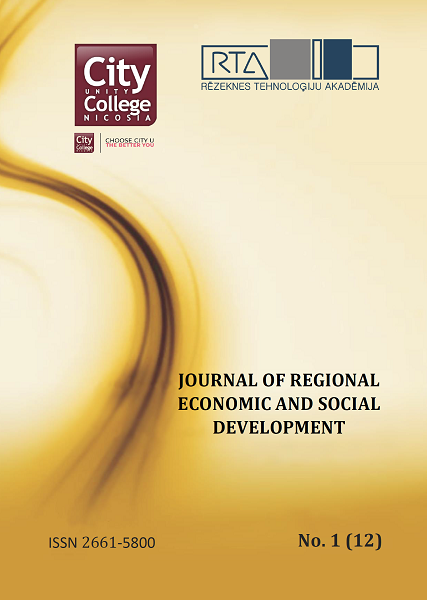STAFF MOTIVATION PROBLEMS IN SMALL ENTERPRISES
DOI:
https://doi.org/10.17770/jresd2020vol1.12.5399Keywords:
small enterprises, motivation, personnelAbstract
One of the challenges a company manager constantly faces is employee motivation. According to the authors' empirical experience, in small enterprises, an entrepreneur often has limited opportunities to hire a large number of employees, so the existing ones have to perform not only direct job responsibilities within their position or profession, but also other additional duties. The aim of the research is to study the problems and opportunities of employees motivation in small enterprises. Two surveys were conducted to achieve the aim. The survey of entrepreneurs examines the motivation of employees from the point of view of entrepreneurs, while the second survey examines the opinion of employees on motivation in small enterprises. As a result, the motivators are ranked from both points of view and compared.
Downloads
References
Barney, B. J., Arikan, A. M. (2001). The Resource Based View: Origins and Implications. The Blackwell Handbook of Strategic Management. Oxford: Wiley-Blackwell.
Barney, J. B. (1991). Firm Resources and Sustained Competitive Advantage. Journal of Management, 17, 99- 120.
Beļčikovs, J., Praude, V. (2001). Menedžments. Rīga: Vaidelote.
Eriksen, B., Mikkelsen, J. (2006). Competitive Advantage and Core Competence. Towards a Competence Theory of the Firm. London: Routlege.
Jorfi, H., Jorfi, S., Yaacob, H. F., Yaccob, B., Shah, I. M. (2011). Relationships among Strategic Management, Strategic Behaviors, Emotional Intelligence, IT-business Strategic Alignment, Motivation, and Communication Effectiveness, International Journal of Business and Management, 6 (9), 30-37.
Kantāne, I. (2013). Latvijas mazo uzņēmumu vadīšanas īpatnības. Promocijas darba kopsavilkums. Rīga.
Macdonald, S., Assimakopoulos, D., Anderson, P. (2007). Education and Training for Innovation in SMEs: A Tale of Exploitation. International Small Business Journal, 25 (1), 77 – 95.
Megginson, L. C., Byrd, M. J., Megginson, W. L. (2006). Small Business Management (5th ed.). McGraw-Hill Companies.
Ordynskaya, M. E., et al. (2016). Tax Incentives for Small and Medium Businesses in European Union Countries in the Crisis Period. International Journal of Economics and Financial Issues, 6, 212-218. Retrieved from http://www.econjournals.com/index.php/ijefi/article/viewFile/2554/pdf
Ray, G., Barney, J. B., Muhanna, W. A. (2004). Capabilities, Business Processes, and Competitive Advantage: Choosing the Dependent Variable in Empirical Tests of the Resource-based View. Strategic Management Journal, 25, 23-37.
Tabassi, A. A., Ramli, M., Bakar, A. H. (2012). Effects of training and motivation practices on teamwork improvement and task efficiency: The case of construction firms. International Journal of Project Management, 30, 213-224.
Vorončuka, I. (2009). Personāla vadība. Rīga: Latvijas Universitāte.


